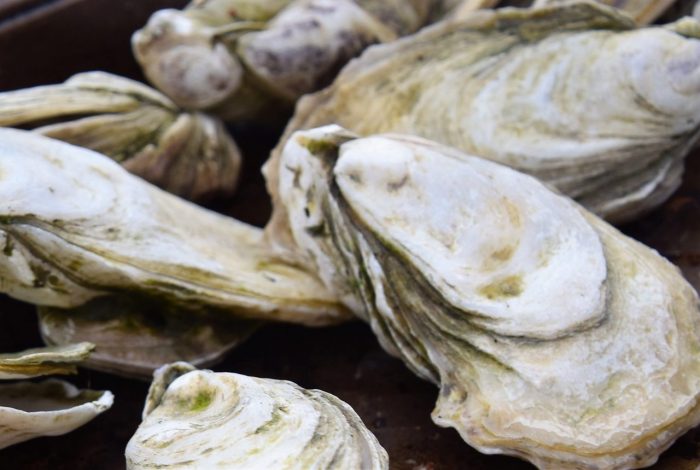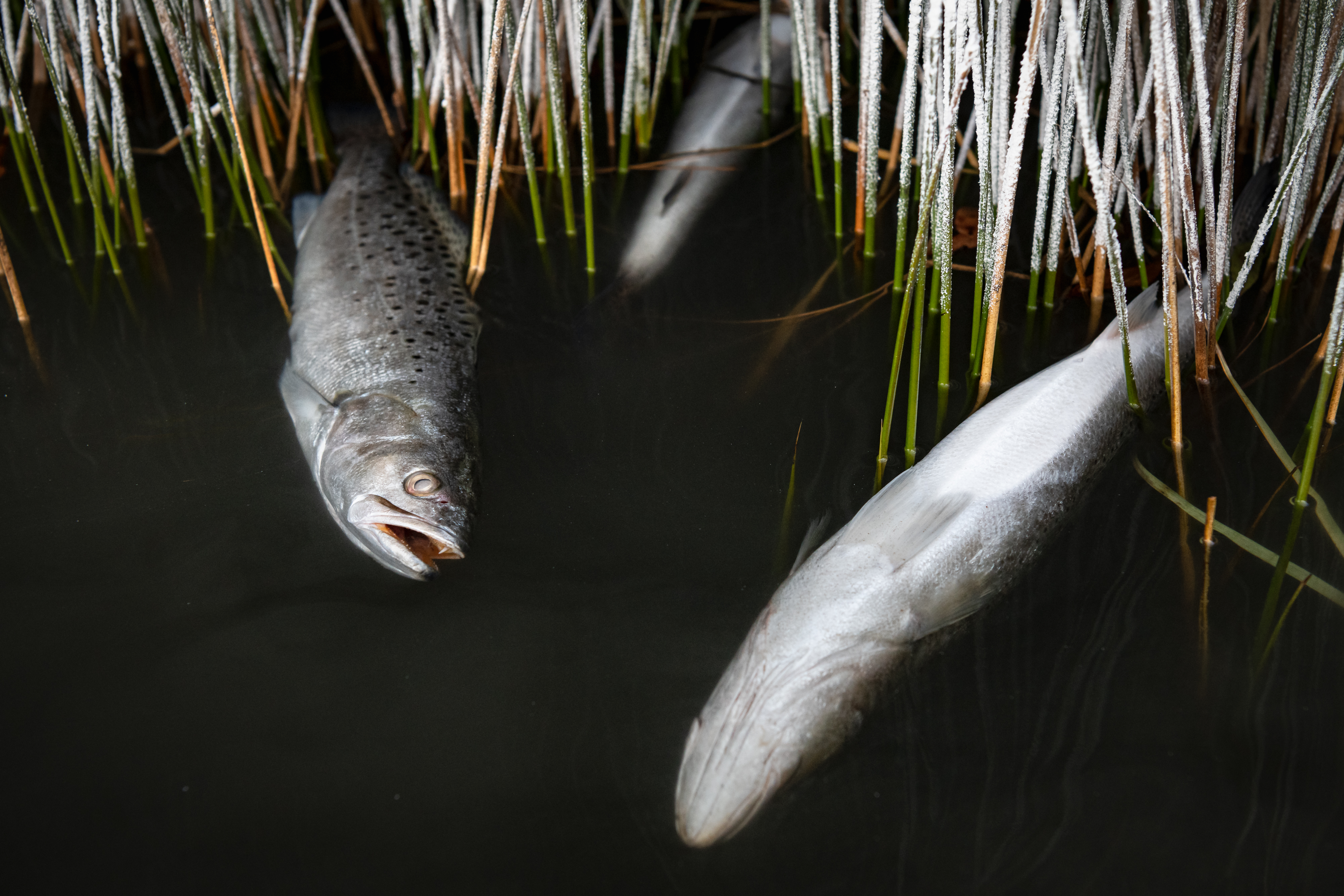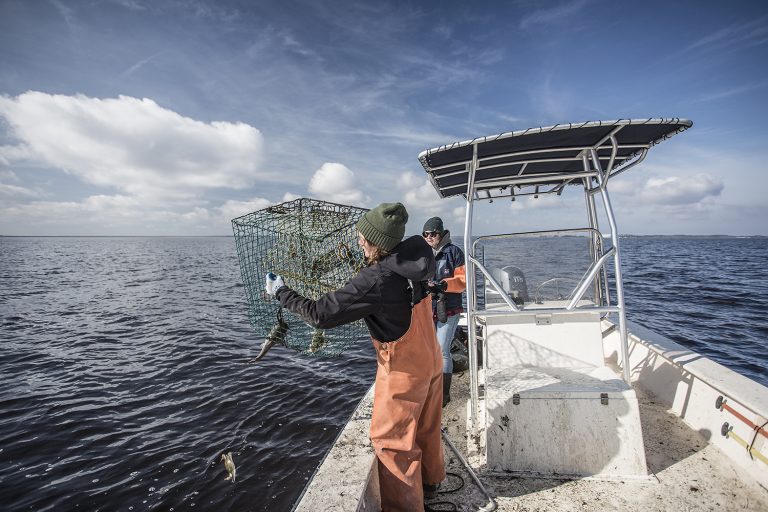Oyster awareness: Shellfish benefit environment, economy
By Hannah Ross
Guest commentary
It may sound too good to be true that one, palm-sized organism could filter water, provide habitat, secure the coastline, and be a delicious, nutritious powerhouse on the plate. But it’s not a gimmick — the oyster does it all.
In North Carolina, a consortium of government, university, business and nonprofit stakeholders are working to restore historically depleted oyster populations in tandem with designing resilient wetlands, building a thriving industry, and preserving an icon of coastal heritage. North Carolina leads the way nationally in its collaborative, multifaceted approach to protecting, restoring, harvesting, and educating people about oysters.
In support of this superhero species, North Carolina Forever is working to spark awareness about oysters and the people behind the nimble and broad effort to bolster them as a catalyst for a resilient future, where people and ecosystems thrive. North Carolina Forever is a bipartisan coalition of North Carolinians — from businesses, agricultural, conservation and environmental organizations — aiming to influence legislation and secure the funding necessary to keep a promise held by the state constitution: “to conserve and protect its lands and waters for the benefit of all its citizenry.”

On Dec. 14, 2021, NC Forever hosted an educational webinar exploring the kaleidoscopic benefits of oysters to our state. This panel discussion entitled, “Oysters! Good for the economy. Great for the environment. Even better for dinner!” was the final installment of a five-webinar series sponsored by State Employees Credit Union and aimed at engaging stakeholders around vital issues facing North Carolina’s lands and waters.
Convened for this aquaculture deep dive were: Erin Fleckenstein of the North Carolina Coastal Federation, Jason Peters of the N.C. Division for Marine Fisheries, Tom Looney of the Coastal Federation’s Coastal Executive Leadership Council, Rep. Bobby Hanig, R-Currituck, and Sen. Norman Sanderson, R-Pamlico. The webinar was moderated by Coastal Federation Executive Director Todd Miller, who is also a board member with NC Forever.
A coastal scientist with the federation who’s based in Wanchese, Fleckenstein kicked off the conversation with a review of the comprehensive roadmap driving statewide strategy and action around oyster resiliency: the North Carolina Oyster Blueprint. Fleckenstein introduced the fourth edition of the Blueprint, which sets goals for the next five years, focusing on the four strategies of protecting, restoring, harvesting, and educating about oysters. She highlighted key actions within each strategy, including oyster sanctuaries, living shorelines, oyster shell recycling, cultch planting, and expanded outreach.
Fleckenstein noted that the Blueprint “is one of the only efforts in the country that outlines goals and actions to balance oyster habitat, water quality protection, oyster harvest, and oyster farming.”
Reviewing additional aspects of the Blueprint was Jason Peters, who oversees shellfish restoration programs for the Division of Marine Fisheries. Peters’ enthusiasm for oysters and his work was clear; he admitted that his fiancé continually reminds him to cut the oyster talk after 5 p.m. He stressed that oysters offer us “so many services other than just food value,” from environmental to economic. Peters shared recent developments in the oyster sanctuary and cultch planting programs, which he oversees and are further outlined within the Blueprint.
Currently there are around 400 acres protected through the oyster sanctuary program, which creates small, sheltered areas to foster high-density oyster populations, spawning larvae and supporting wild species beyond their borders. These sanctuaries also support fish populations and filter vast amounts of water.
In 2020, the General Assembly approved $1.35 million in funding for the Sen. Jean Preston Oyster Sanctuary Network, which currently consists of 15 sanctuaries throughout the Pamlico Sound. The Blueprint sets a goal to build an additional 100 acres of sanctuary in Pamlico Sound by 2025.
The cultch planting program complements the work of these sanctuaries, restoring wild oyster habitat by establishing new reef sites using hard substrates like shell and limestone marl, which are deposited in strategic areas by barges. Peters is excited about the division’s recently received funding for the purchase of a new cultch planting vessel, which will be able to reach previously inaccessible areas in need of oyster habitat restoration, particularly in southern and remote parts of the North Carolina coast.
Peters emphasized that with frequent and increasingly severe storms, the power of oyster reefs to stabilize sediments is critical to coastal habitat resilience, and that the state’s interest in protecting these areas through shellfish restoration is promising.
Key to legislative backing for this restoration and protection work has been the win-win equation of the oyster industry’s economic potential, alongside the ecosystem services they provide. Bringing to bear deep business expertise paired with a passion for aquaculture was Tom Looney, the third panelist to share his experiences. Looney illustrated a convergence of factors leading to the explosive growth of North Carolina aquaculture in recent years — an unlikely turnaround following at least 100 years of depleted oyster resources, and a historically anemic aquaculture industry.
Efforts to restore oyster habitat and population have been met with key developments in oyster breeding to awaken this latent economic engine along our coast. The development and improved availability of triploid oysters for year-round enjoyment (not just months containing the letter “r”), along with increased oyster shell thickness (for easier shucking), and a shorter maturation period, have made oysters more consistently marketable. These improvements have dramatically increased the viability of small-scale aquaculture operations.
Such developments were critical, Looney highlighted, in convincing the legislature that this industry could deliver prolific, solid jobs and bring sustainable economic growth to our coastal communities.
It can be notoriously tricky to bring bipartisan environmental and business interests on board with a shared legislative agenda. The Blueprint meets the moment of economic opportunity with sound guidance on how to restore, protect, and harvest the threatened coastal resources that allow this industry to exist, so that it can grow sustainably.
Sen. Sanderson said the Blueprint “impressed the Senate” with its efficacy and its thoughtfulness, stressing that not many plans come to their desks so ready to implement. The effectiveness of the Blueprint to garner bipartisan support strikes a note of hope as we face layered environmental challenges in North Carolina; not only is it a roadmap for sustained oyster resources, but a potentially useful framework for future communication and conservation victories as well.
“No one is doing this kind of a program in the way North Carolina is doing it,” stressed Sen. Sanderson, “and it’s all because of the wisdom, the scientific approach, and all the other facets that have come together to see this succeed. And I absolutely believe that it is going to succeed.”
Oysters have proven themselves to be worthy of investment. Today, there are over 200 oyster growers along the N.C. coast, generating $27 million in economic impact with over 500 new jobs created. The goal of the working group surrounding these oyster efforts is to generate $100 million in business and 1,000 jobs by 2030.
Empowering passionate people who want to join this emerging industry will be key to achieving these goals, but barriers to entry for growers have been significant. Thanks to the advocacy of the oyster experts convened, the legislature has approved $1 million in funding for low-cost loans catered to shellfish startups, via the N.C. Rural Center. Such loans will make starting an aquaculture business much more accessible.
The next phase of support for these entrepreneurs is a plan to line the coast of North Carolina with aquaculture business incubator programs, to foster healthy growth of sustainable businesses — alongside healthy growth of our coastal ecosystems.
This isn’t a venture to rush into, however. Sen. Sanderson emphasized, “You’ve got to know what you’re getting into … this is hard work.”
Along with shellfish curricula at community colleges, the proposed incubator programs could help shape dreams into savvy business plans, bolstering the likelihood of successful ventures, and the conscious growth of the aquaculture industry.
Rep. Hanig highlighted the “really comprehensive” Senate Bill 648, entitled “Support Shellfish Aquaculture.” The legislation was passed unanimously in 2019, establishing a pilot project for large oyster leases, streamlining the permitting process for aquaculture operations, increasing areas available for aquaculture, and looking at ways to mitigate user conflicts in lease areas. Improved regulatory processes, in tandem with increased educational opportunities and accessible loans, aim to buoy new N.C. aquaculture ventures.
Consumers are critical to the longevity of any industry; all panelists stressed the importance of education and outreach for the continued enjoyment of our state’s treasured bivalves. Tom Looney highlighted that oyster consumption is doubling every five years; intentional communication strategies can ensure that those consumer cravings are connected with local resources.
Looney applauded The Oyster Trail — a connective platform with over 50 members and a user-friendly app that links customers to oyster farms, restaurants, markets, and educational tours. Beyond this tool, N.C. oyster resources can now be found in state welcome centers, aquariums, and coastal museums.
“Many people weren’t even aware we had an oyster industry,” remarked Looney. “Today, we’re driving awareness in a big way.”
In addition to following The Oyster Trail throughout the state, citizens can engage in service to fortify our coastal ecosystems. The Coastal Federation offers opportunities for volunteers to plant native vegetation, recycle oyster shells, install rain gardens, clean up marine debris, and assist with outreach programs.
Not only does Erin Fleckenstein spend her working hours fighting for our coastline through strategy and science, she also spends time helping to restore wetland habitats. Fleckenstein explained that, if we can more effectively divert and filter water through the landscape— effectively removing pollutants before it hits the coast— we can help oysters do their jobs and thrive in greater numbers.
“It’s all coming back to water quality,” Fleckenstein maintained, “making sure the waters of our sound are supporting these restoration efforts.”
Rep. Hanig emphasized that the multi-layered benefits and increased awareness of oysters “are just huge for us here, especially in eastern North Carolina,” where some of the state’s most economically and geographically vulnerable communities are located.
While the aquaculture industry’s growth is a beacon of hope in North Carolina, there are significant challenges to navigate. Presently, the coronavirus pandemic and its pervasive disruptions present hurdles to oyster stakeholders, from the coast to the kitchen.
Hanig called attention to House Bill 916, which appropriated $17 million in meat and seafood processing grants, to support businesses in the creation of new programs for resiliency in the face of COVID-19.
Looking forward, Tom Looney underscored the growing challenges presented by erosion, sea-level rise, and climate change. These ecological crises require unconventional partnerships working together for our shared natural resources, taking bold action on behalf of NC’s intertwined communities and ecosystems.
Such unconventional, bold partnerships are central to North Carolina Forever’s agenda to preserve our state’s natural resources.
In the face of these complex challenges, it is wise to follow the lead of the oyster, which holds the knowledge to restore our waters and support its neighbors — if only we can protect and bolster the wild spaces in which they thrive. In times like these, we have much to learn from the oyster.
To stimulate discussion and debate, Coastal Review welcomes differing viewpoints on topical coastal issues. See our guidelines for submitting guest columns. Opinions expressed by the authors are not necessarily those of Coastal Review or the North Carolina Coastal Federation. Submissions may be edited for clarity.












